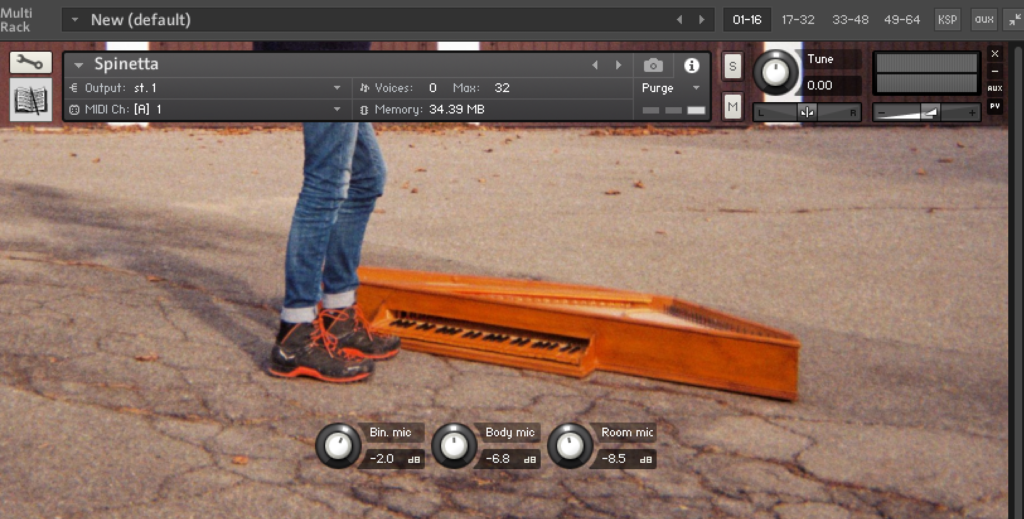Spinetta Italiana
Elgorni's portable keyboard randomly found on the internet and partially restored. Tuned with meantone temperament, A=415 Hz.


ByJSamples
The story
Considering how fragile harpsichords are, Francesco Elgorni asked me to sample his own personal spinet in order to save a “backup copy” of his instrument before its death.
“I got this instrument by winning an auction on the internet. Because of the low price I knew the instrument wasn’t going to be perfect. Once I saw its conditions, I tried my best to restore the mechanics. After taking some care, the instrument came to life once again thanks to the precious help of Giulio Ardemagni. However, some mechanical noise is still present. It must have seen better times. I only hope cracks won’t widen even more…”
In order to fully encapture its 17th century “vibes”, the instrument has been sampled in 1/4 comma meantone temperament (A=415 Hz).
Three stereo samplings are avaiable, all at 48 Khz sample rate:
-binaural (from player’s prospective, best for study)
-close-up (body)
-room
Sample editing, interface and programming are made by me.
Picture taken by Claudia Elcide. Film developped by Ghisa Film Lab.
No signature could be found on the instrument.
We think it belongs to the internet.
Internet finds
Interface

Reviews
A nice mini harpsichord!
This is a great mini haprsichord that has been sampled nicely and feautres three different mics that you can blend however you like. There are also some release triggers that are not adjustable at all, but they add something unique to the character. The sampling quality is great, but the tuning is off, to the point that you have to set it to +1 semitone up, since the middle C sounds like a B.
There are 4 octaves in general, though you might hear some weirdly placed notes at the lower one in case you go down there. Definitely not a dealbreaker though. As long as you are fine with the tuning, you will definitely enjoy it.
Great sounding instrument with a few caveats
I'm always happy to find a sample library of an obscure historical or folk instrument, and this one sounds great. Every key has been sampled with 3 different mics which can be freely mixed, and all three sound great. Given the impeccable sound quality, I think it's a bit of a shame that the instrument wasn't sampled with a few extra RRs and Velocity Layers to really bring it to life. However this exponentially increases the workload and the instrument is definitely still playable without these extras.
Where the playability falls down a bit is in the tuning. Firstly, as mentioned in the description, it's tuned to A=415 Hz, so you are out of luck if you want to use it with any other instrument, unless you're willing to go and retune every note under the hood (maybe you'll be thanking the lack of RRs/VLs if undertaking this endeavour). Secondly, some of the notes are really out of tune even within the temperament, especially if you're playing on black keys. I think the providing a true representation of the original instrument is admirable, but in these types of situations I think providing a second patch with everything in tune and in 440Hz is the ideal from a playability standpoint.
Nonetheless, for the most part it's a fantastic sounding instrument and not something you see or hear every day! Thanks JeiCe!
